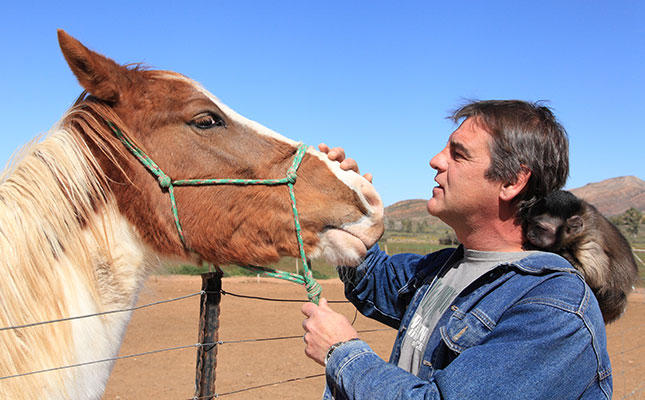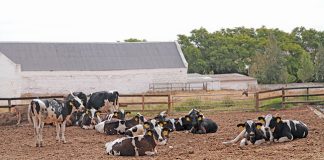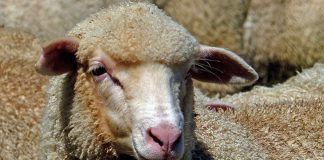
Photo: Glenneis Kriel
The past few years have seen a slump in South Africa’s horse market due to drought conditions in many parts of the country. This has pushed up feeding costs, in turn driving down demand and resulting in many horses, even top stud animals, selling at slaughter prices.
However, Pierre and Carine Kleinhans, owners of a horse-breeding operation on the farm Draaiberg, near Touws River in the Western Cape, saw the situation as an opportunity to rethink their business strategy.
“We love our horses and realised it was only a matter of time before the market recovered. It also made sense to hold onto the genetic material, rather than rebuilding stock from scratch once conditions normalised,” says Pierre.
In an effort to reduce production costs, they skipped the breeding season twice during the drought to maintain their herd size at about 17 mares and one stallion.
The couple’s operation, Buckaroo Saloon, breeds rugged, cowboy-style workhorses.
“The demand for workhorses is likely to increase, due to the escalation in fuel prices, making it cheaper to patrol farms on horseback,” says Pierre. “Horses have the added advantage of being able to cross areas inaccessible to vehicles.”
Breeding strategy
The Kleinhanses’ breeding philosophy is rooted in the notion of the relationship between cowboys and their horses in the Wild West of the old US.
“For many cowboys, a horse was not only a work and transport animal, but also a close companion, which is why temperament is such an important breeding goal for us,” says Carine.
“At the same time, little veterinary aid was available back then, so a horse had to be naturally resilient to survive.”
She says that the pampering and stabling of horses have created an exaggerated idea of what it costs to keep one, resulting in many people deciding against doing so. Being bred and raised for hardiness, Buckaroo horses seldom, if ever, require a veterinarian. In addition, the horses are kept outside, which eliminates stabling costs.
Carine estimates that it costs them about R1 000 a month to keep a single horse.
Rescue horses
The couple’s horse production journey began in 2010, when Carine started rescuing and restoring neglected horses back to health while living in Port Nolloth in the Namaqualand. Pierre, in the meantime, was focused primarily on his career in security, which involved, over the years, working in the army, the police services and lastly, in Iraq.
“Many people cautioned me against using these horses for breeding, saying they developed behavioural problems, such as nervousness, moodiness and excitability,” recalls Carine.
To prevent these problems, the mares are evaluated before breeding to ensure they have no tics and are easy-going. A well-known stallion, Juistzoo Fire, registered with the Paint Horse Society of South Africa, is used on these mares. Being homozygous, he produces coloured foals.
The stallion also has a relaxed temperament and is kept close to the mares; there is no need for electric fencing to separate him from them.
Another breeding objective is to produce eye-catching animals. Pierre and Carine breed tobianos, horses with pinto coats, which have large patches of white with another colour. They also tend to have blue eyes.
The couple’s selection strategy has unintentionally resulted in hybrids with about 90% Boerperd blood, a breed renowned for endurance and hardiness.
Well-located
In 2015, the Kleinhanses bought Draaiberg and moved the horses there. In August this year, Pierre stopped working in Iraq and joined the business full-time. The farm is only 30km from a quarantine station, making it easy to sell the horses to other parts of the country.
“We fall within the African horse sickness control area, so our horses must be cleared by a vet before being sent to other regions,” says Pierre.
The horses are not only bred for hardiness and good temperament, but nurtured into being such animals. The farm, for instance, is close to a shooting range, enabling the animals to become accustomed to gunshots.
The horses overnight in camps near the farmhouse to prevent injury, as they still tend to get spooked by predators, such as the leopard that makes her rounds every three weeks or so.
Riding
The Kleinhanses’ focus on a natural approach extends to the way in which the horses are ridden. To begin with, they are not shod. “A bare hoof is not as hard on the legs of the horse than a shod hoof. It’s also more natural and results in horses living happier, longer lives,” says Pierre.
They trim the hooves themselves once or twice a year to prevent overgrowth, but make use of an itinerant farrier when he is in the neighbourhood.
They also float the horses’ teeth annually to remove any sharp edges that could cause injury.
Buckaroo horses are not bridled with a bit.
“We don’t like using a bit. We feel it’s unnatural and can cause cuts and pain to the mouth, especially when fitted wrongly or used by inexperienced horses or riders,” says Pierre.
The couple experimented with a hackamore, a bitless bridle that applies pressure to the nose of the animal when the rider pulls on the reins.
Most of the horses adapted to the new device immediately, but Pierre and Carine took several days to become accustomed to it. Pierre still uses it, but Carine moved on to cross-under halters in 2016, as the hackamore can cause injury to the horse’s nose when used incorrectly.
Today, all their young horses are schooled on cross-under halters. Carine ties these herself. The straps criss-cross under the horse’s jaw, which lets the rider apply pressure to different parts of the head when pulling a rein. When both reins are picked up, the straps tighten on both sides, applying pressure on the poll and jaw, giving more contact and leverage than a simple side-pull halter.
They also use neck-reining rather than direct-reining. With the latter, the horse’s nose is pulled left or right to make the animal go in the desired direction. In neck-reining, one rein is laid on the horse’s neck, applying gentle pressure to encourage the animal to turn in the opposite direction.
“This allows horses to change direction with light pressure of a rein, enabling a rider to steer with only one hand like a cowboy, who uses a lariat in the other hand to herd cattle,” says Pierre.
He adds that they prefer the Western saddle as it distributes the rider’s weight more evenly over the horse’s back and is more comfortable for extended rides.
Hiring or buying a buckeroo horse
Horses can be either hired or purchased from the farm, and the Kleinhanses also provide training in horsemanship. They are currently hiring out a couple of horses to a local farmer while training the two workers who will be riding the animals.
“We’ve invested a lot of time and energy in producing a specific type of animal and don’t want these animals to suffer because of improper use or care. We therefore offer training to ensure our clients use the horses properly,” explains Pierre.
He adds that the cost of keeping a horse depends on the availability of feed and maintenance. “You can usually pick up a bale of oats for R50 to R60, which would supply one horse for three days. There’s no need for supplements.”
The horses on their farm receive feed in the morning and evening. “They can get fed once a day, but tend to get ‘naughty’ out of boredom. Stabled horses should be fed three times a day, as they don’t have access to graze or other feed.”
The area that can be covered by a horse will depend on the terrain and climatic conditions.
“It might be able to do 35km to 50km in one day, but it can’t do that every day. It’s best to divide a large farm into sections that can be patrolled by separate workers or on separate days,” says Pierre.
Fighting crime with horses and dogs
The Kleinhanses recently launched another venture: farm security using horses and dogs. Carine and the couple’s daughter, Suyana, bought two mantrailing dogs and attended a specialised course. These dogs are excellent trailers and protect their handlers if they become immobilised, according to Pierre.
“With my experience in security services, and our horse and dog combination, we’ll be able to track and apprehend perpetrators in areas that were previously difficult to get to,” he says.
Email Carine or Pierre Kleinhans at [email protected].











